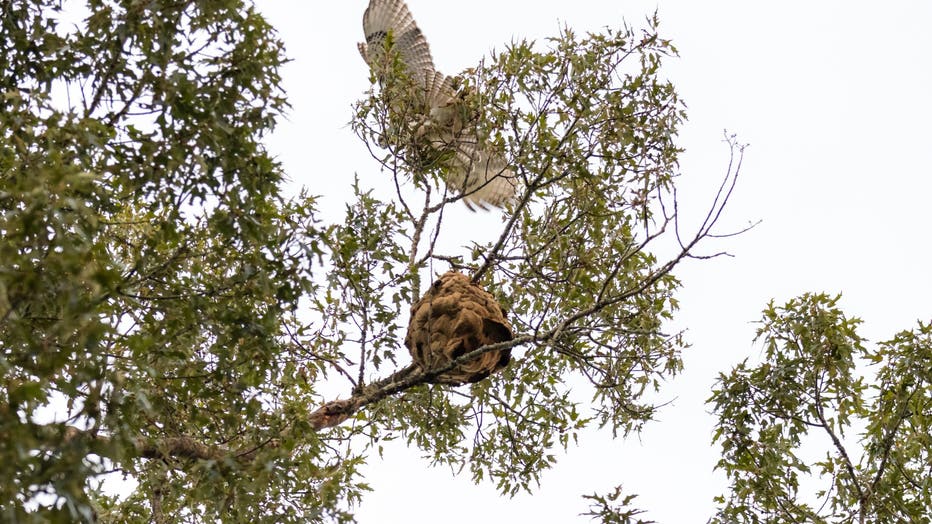Georgia sounds alarm on invasive hornet nests, help stop the spread
Courtesy of Georgia Department of Agriculture
GEORGIA - Georgia Agriculture Commissioner Tyler Harper is urging residents to stay alert for Yellow-Legged Hornet (YLH) embryo nests as spring approaches.
What we know:
The hornets, which emerge from overwintering in early spring, can quickly establish nests that lead to larger colonies later in the year.

Courtesy of Georgia Department of Agriculture
Early detection is key to controlling the invasive species, as targeting embryo nests prevents queens from producing worker hornets, reducing the formation of larger secondary nests. Officials emphasize that the queen must be eradicated along with the nest to be effective.
What they're saying:
"We are continuing to ask for the public’s help in our effort to eradicate the Yellow-Legged Hornet from our state," Harper said. "By reporting sightings of embryo nests early, we can stop the queens from spreading and minimize the damage they cause. It’s crucial that we work together to protect our state’s No. 1 industry—agriculture."
What to Look For
- Embryo nests are the first stage of nest formation and typically appear between March and April. They are small, ranging in size from a ping-pong ball to a tennis ball, and are often found in sheltered spots like the eaves of buildings.
- Primary nests develop between April and June, followed by secondary nests in late summer (June-December).

Courtesy of Georgia Department of Agriculture
How to Report a Sighting
What you can do:
Officials warn against attempting to remove a nest yourself. Instead, report suspected embryo nests to the Georgia Department of Agriculture's Plant Protection Division at yellow.legged.hornet@agr.georgia.gov or contact a licensed pest management professional.
For more information about Yellow-Legged Hornets, visit agr.georgia.gov/yellow-legged-hornet.

